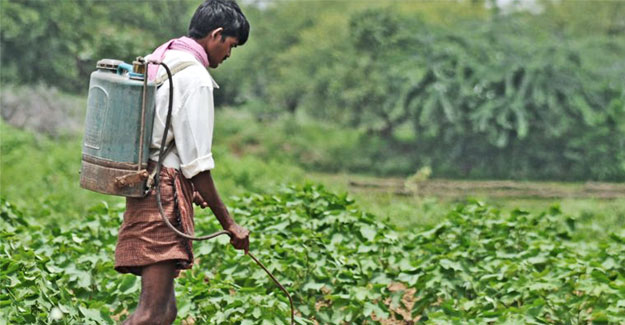
AI Is Reducing Indian Cotton Farmers' Pesticide Use
Cotton economy is important for India. India accounts for almost 37.5% of the global cotton area and contributes to 26% of the global cotton produce of 23.92 million metric tons. Around 5.8 million cotton farmers and 40-50 million people sustain their livelihood in related activities, such as cotton processing and trade. Unfortunately, cotton accounts for 55% pesticide usage in Indian farming. Artificial intelligence (AI) and other disruptive technologies have been helping the agriculture industry in modernising agricultural activities and resolve issues, and these solutions are now available to cotton farmers too. India-based research institute Wadhwani AI started searching for solutions in 2018 to help cotton farmers save their crops using artificial intelligence insights. Conceptualisation and data collection The idea of using the artificial intelligence model was to determine how many pests are noticed in that area and send an advisory on pesticide usage. But, there was no preliminary field data available to train the model. Hence, the researchers had to create a special app to collect data. Cotton farmers already use pheromone traps to catch pests and anticipate if there might be a massive attack. The data collection application suggested farmers click photos of pests caught in the traps on a white sheet of paper. They initially aimed to detect different bollworms that pose a significant threat to cotton crops. "The team spent the initial few seasons gathering and observing the data to refine the model," says Jerome White, Senior Researcher at Wadhwani AI. "The team had to ensure the model correctly recognises the type and number of pests in the picture to give accurate advice to the farmers." There were plenty of challenges to do that. Many farmers used phones that had snapped only low-resolution photos - this was the primary challenge. Also, some did not use white paper as background, some used camera flash, or the light was not good enough. In general, getting the right photo quality was a problem. The initial data collection started in 2018 from Maharastra. Last year, the Wadhwani AI team deployed an early version of the trained and validated model with more than 28,000 images. Deployment Researchers compressed the model from 268MB to 5MB, keeping in mind that the app would be used primarily on low-end phones. They then used PyTorch Mobile to install it to an app that also worked offline. As per the rules of farming authorities of India, the model now analyses images sent by farmers. It's currently deployed in various districts of Indian states, such as Maharashtra, Gujarat, and Telangana. Today, over 18,500 farmers are using the application, and every village has a lead farmer to communicate with the project's co-ordinators and alert their fellow farmers about the notifications sent by the app. There are three levels of alert - green, yellow, and red. Based on the notification colour, farmers use pesticides suggested in the app. Maharastra's summer experiment shows 150 farmers used the system and a 25% gain in cotton crop. These results led the Maharastra and Telangana state governments to expand the project into the next cotton growing season (June-November). Besides, the researchers are working with the Better Cotton initiative (BCI), a global non-profit organisation that works for the betterment of cotton farmers, scaling this project worldwide.
Textile Excellence
If you wish to Subscribe to Textile Excellence Print Edition, kindly fill in the below form and we shall get back to you with details.








